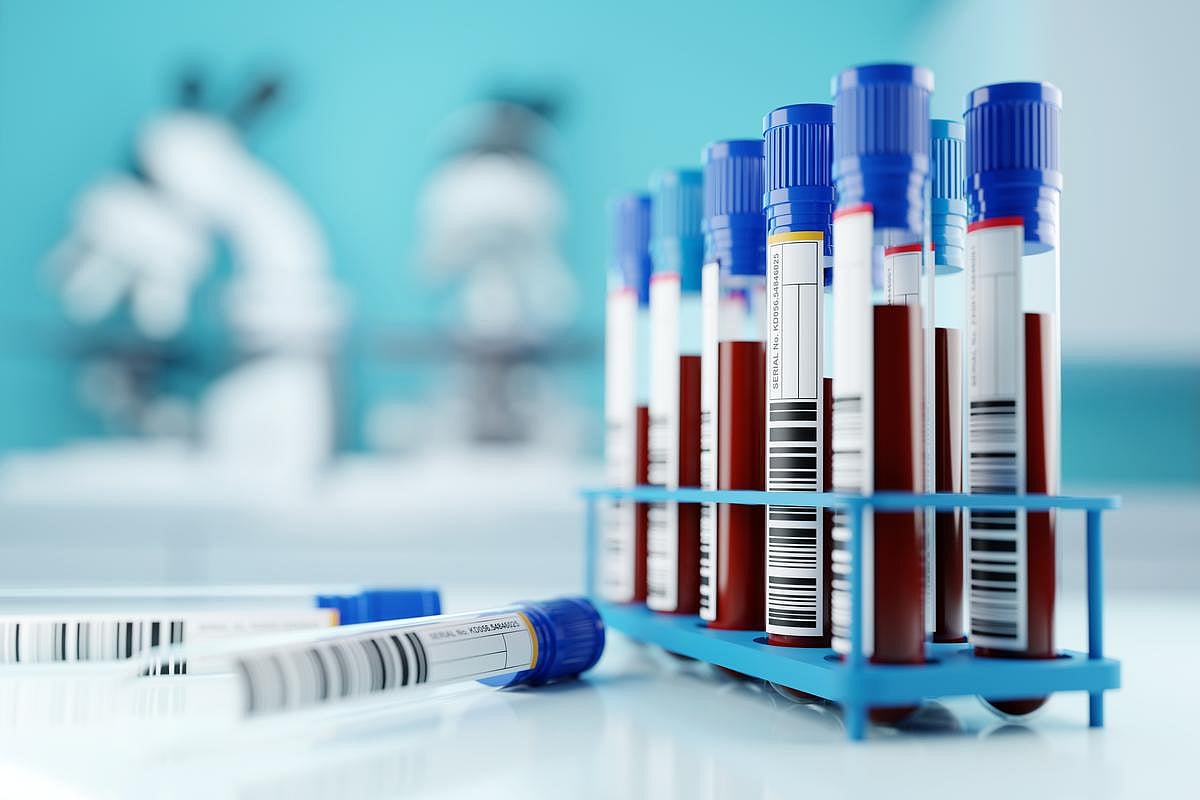Get Healthy!

- Ernie Mundell
- Posted October 16, 2024
New Combo Drug Therapy Halves Death Risk From Advanced Hodgkin Lymphoma
Jenna Cottrell is a young sports reporter working for a TV station in the Rochester, N.Y., area.
She's also a survivor of advanced Hodgkin lymphoma, who first got diagnosed at the age of 25 back in 2017.
After 12 rounds of the then standard-of-care treatment chemotherapy, "I've been in remission since 2017," Cottrell said in an interview at the University of Rochester Medical Center.
However, "the physical toll that it did take on my body, both, you know, mentally and also emotionally ... it's a challenging journey," she said.
That's why Cottrell is so enthusiastic about the results of a new clinical trial published Oct. 16 in the New England Journal of Medicine.
It found that adding the drug nivolumab to what's known as AVD therapy (doxorubicin/Adriamycin, vinblastine, and dacarbazine) halved the rate of cancer progression or death for patients, compared to the former protocol of AVD plus brentuximab vedotin.
The new "N-AVD" treatment also has less onerous side effects than the prior regimen, researchers reported.
"I just can't help but feel so positive for future patients, because to hear about a treatment that works so successfully and is less taxing on the body, is just really, really encouraging, and I'm really thankful to hear about this study," Cottrell said.
Hodgkin lymphoma is a cancer involving the proliferation of the immune system's white blood cells, in this case a cell called a B lymphocyte.
According to the American Cancer Society, about 8,600 new cases of the illness are diagnosed each year, and in 2024 Hodgkin lymphoma is expected to claim about 910 lives.
"It disproportionately affects younger patients, the median age of patients diagnosed with Hodgkin lymphoma may be around 30, meaning half the patients are younger than that," noted study corresponding author Dr. Jonathan Friedberg. He directs the James P. Wilmot Cancer Institute at the University of Rochester.
Before the new trial, the standard of care for stage 3 or 4 Hodgkin lymphoma was brentuximab vedotin plus AVD (BV-AVD).
However, in mid-2023, early results from a trial comparing BV-AVD with the newer N-AVD regimen found outcomes in people getting N-AVD were very positive -- so positive that a "preset threshold" for treatment effectiveness had already been achieved.
Now, more than two years of follow-up is confirming those early hopes.
“This new analysis with more patient follow-up is critical to understanding the clinically meaningful benefit obtained from N-AVD compared to BV-AVD,” Michael LeBlanc, lead biostatistician on the study, said in a news release from the SWOG Cancer Research Network. He's also a professor of biostatistics at Fred Hutch Cancer Center in Seattle.
The phase 3 clinical compared outcomes for both drug regimens among 970 newly diagnosed adolescents and adults. All were battling stage 3 or 4 classic Hodgkin lymphomas.
With two years of follow-up, the rate of survival without any sign of the lymphoma progressing was 92 percent for those getting N-AVD, compared to 83 percent of those receiving BV-AVD, Friedberg's team found.
Fewer patients taking the regimen that included nivolumab died during treatment compared to those getting BV-AVD (0.6 percent of patients versus 1.7 percent), according to the researchers.
All of this adds up to a roughly halving of the rate of cancer progression or death for folks on the newer regimen.
As well, fewer people taking N-AVD had to stop therapy early compared to those on the BV-AVD regimen (7.6 percent of patients versus 12 percent, respectively).
Side effects were generally lower on the nivolumab regimen, the research team said. That was especially true for older patients -- those aged 60 and above.
According to Friedberg, who spoke in the University of Rochester interview, progress against Hodgkin lymphoma has been one of cancer research's "greatest success stories."
"In the 1960s, this was a uniform death sentence for patients, and now the majority of patients, in fact, the vast majority of patients with Hodgkin lymphoma are cured," he said.
However, some patients have particularly aggressive tumors or are not diagnosed until their cancer reaches a later stage.
"There's still about 20 to 25% of patients who are not cured, and those patients need to go on and get significant toxic therapy," Friedberg said, and the new N-AVD therapy is a step in the right direction in terms of easing side effects.
It's an achievement Cottrell says she is thankful for, for herself and other patients.
She experienced nausea, weakness and fatigue and the unexpected feeling being physically vulnerable at the age of 25.
"It was really hard to see. I ended up losing my hair, and that was really hard to go through treatment and then look in the mirror and not even realize and recognize yourself," Cottrell said.
So the new regimen's easing of "some of the symptoms that feel so overwhelming at times, or at least helping, really would go a long way for so many people," she said.
More information
Find out more about Hodgkin lymphoma at the National Cancer Institute.
SOURCES: Interview, Wilmot Cancer Institute, University of Rochester Medical Center; SWOG Cancer Research Network, news release, Oct. 16, 2024







